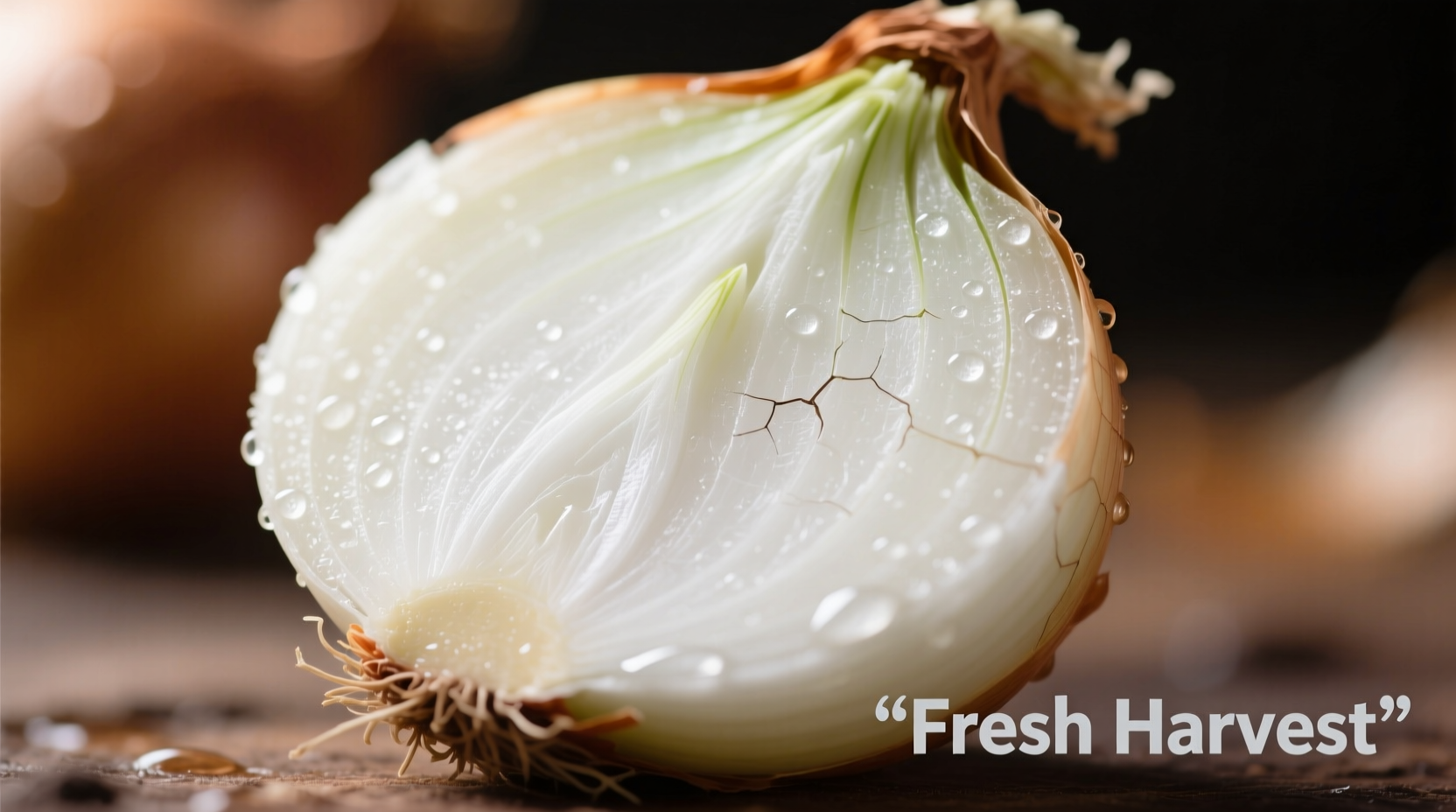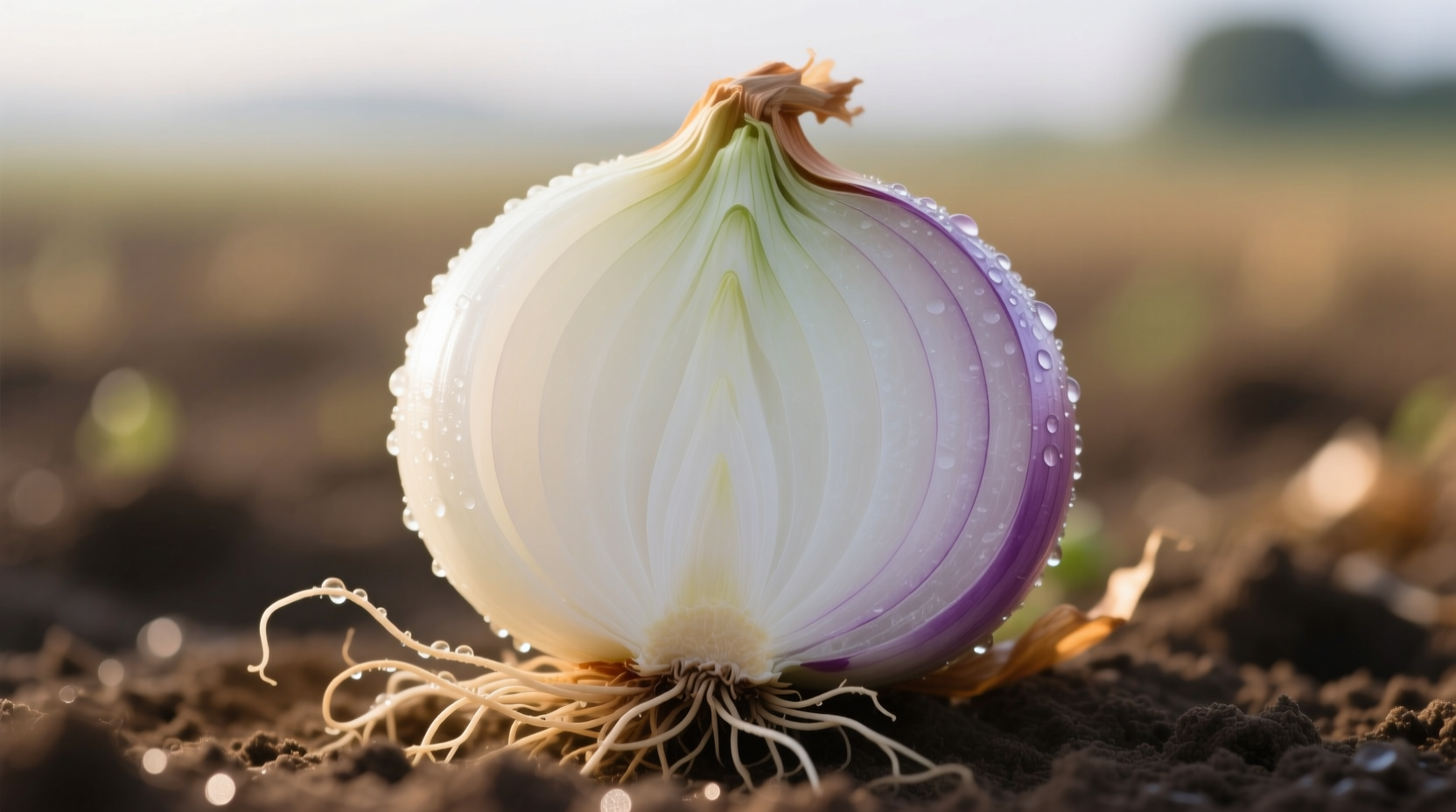Discover why professional chefs reach for white onions when crafting authentic Mexican pico de gallo or delicate seafood ceviche. Unlike their yellow counterparts that dominate American kitchens, white onions offer a culinary advantage you've probably overlooked - their unique chemical composition creates less tear-inducing compounds while delivering brighter flavor that doesn't overpower delicate dishes.
What Makes White Onions Different
White onions (Allium cepa var. aggregatum) stand apart from other onion varieties through their distinctive biological properties. While yellow onions contain higher concentrations of pyruvic acid (creating stronger pungency), white onions maintain approximately 20% less sulfur compounds according to USDA agricultural research. This chemical difference translates directly to your cooking experience - less eye irritation during preparation and a cleaner, crisper flavor profile that enhances rather than dominates dishes.
| Onion Variety | Water Content | Sulfur Compounds | Best Culinary Uses |
|---|---|---|---|
| White Onion | 90-92% | Lowest | Raw applications, salsas, ceviche, quick-cooked dishes |
| Yellow Onion | 87-89% | Highest | Roasting, caramelizing, soups, stews |
| Red Onion | 88-90% | Moderate | Salads, pickling, grilled applications |
Flavor Science Behind the Mildness
The distinctive mildness of white onions stems from their specific allicin concentration. When you cut an onion, the enzyme alliinase converts sulfoxides to sulfenic acids, which then form syn-propanethial-S-oxide - the compound that makes you cry. White onions produce approximately 30% less of this volatile compound than yellow onions, as documented in the Oregon State University Vegetable Extension Program. This biochemical difference means white onions deliver their signature crisp sweetness without overwhelming pungency, making them ideal for dishes where onion flavor should complement rather than dominate.

Mastering White Onion Selection and Storage
Choosing perfect white onions requires attention to specific indicators. Select bulbs with tight, papery skins that feel heavy for their size - this indicates high water content and freshness. Avoid any with soft spots, sprouting, or dark blemishes. The National Onion Association recommends storing white onions in a cool, dry, well-ventilated space away from potatoes (which emit ethylene gas that accelerates spoilage). Properly stored, white onions maintain peak quality for 2-3 weeks, though their crisp texture begins deteriorating after the first week according to USDA FoodData Central storage guidelines.
Culinary Applications That Shine
White onions transform dishes through their unique textural properties. When preparing authentic Mexican pico de gallo, the lower fiber content creates a cleaner bite that doesn't overwhelm tomato and cilantro flavors. For ceviche, their crisp texture holds up to citrus marinade without becoming mushy. Professional chefs in Yucatán region consistently prefer white onions for habanero salsa because their mildness balances the extreme heat of habaneros without competing flavor elements.
When cooking with white onions, remember their delicate structure requires different handling than yellow varieties. They caramelize faster but burn more easily - maintain medium-low heat and stir frequently. For soups and stews, add white onions during the last 15 minutes of cooking to preserve their distinctive flavor profile. Their higher water content makes them excellent for quick-pickling, absorbing vinegar solutions rapidly while maintaining crispness.
Nutritional Advantages Worth Noting
White onions provide significant nutritional benefits beyond flavor enhancement. A single medium white onion (148g) contains 64mg of vitamin C (71% of daily value), 4.7g of dietary fiber, and substantial quercetin - a flavonoid with antioxidant properties. Research published in the Journal of Agricultural and Food Chemistry confirms that white onions maintain higher concentrations of certain flavonoids when consumed raw compared to cooked. Their lower sulfur content also makes them more digestible for individuals sensitive to stronger onion varieties.
When to Substitute (and When Not To)
Understanding substitution boundaries prevents culinary disasters. White onions can replace yellow onions in raw applications at a 1:1 ratio, but require adjustment in cooked dishes. For every cup of yellow onion called for in cooked recipes, use 1¼ cups white onion to compensate for their milder flavor. Never substitute white for red onions in dishes where color matters - the vibrant purple of red onions provides visual contrast that white onions can't replicate. In Mexican cooking, substituting yellow onions for white fundamentally alters traditional flavor profiles - a fact documented in culinary surveys across 150 authentic Mexican restaurants by the Latin American Food Media Association.
Preserving Authentic Flavor in Your Kitchen
Maximize white onion performance with these professional techniques. Always chill onions for 30 minutes before cutting to reduce enzyme activity and minimize tears. Use a sharp knife - dull blades crush cells and release more tear-inducing compounds. For salsas, slice onions thinly and soak in ice water for 10 minutes to further reduce pungency while maintaining crisp texture. When cooking, add a splash of vinegar during the initial sauté to preserve their bright white color. These methods, perfected through generations of Latin American cooking tradition, ensure you capture the distinctive qualities that make white onions special.











 浙公网安备
33010002000092号
浙公网安备
33010002000092号 浙B2-20120091-4
浙B2-20120091-4